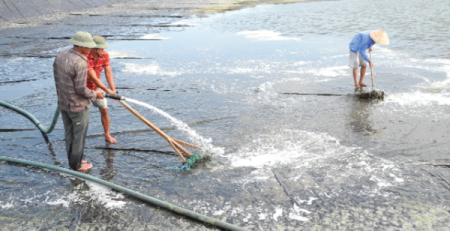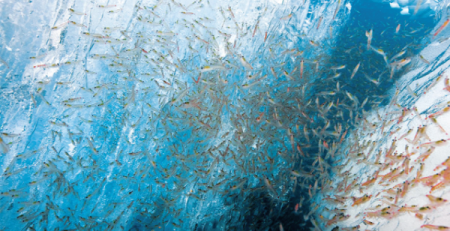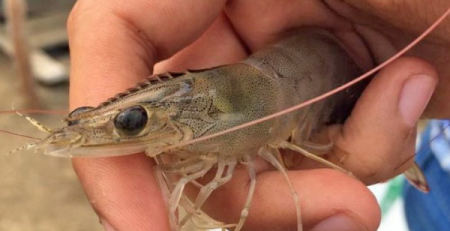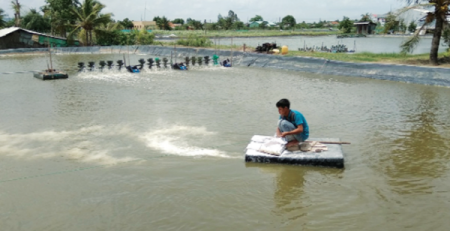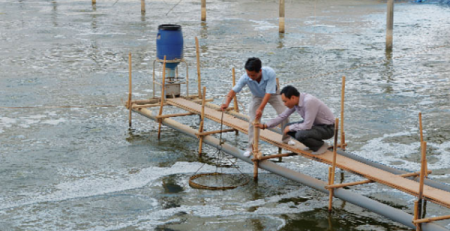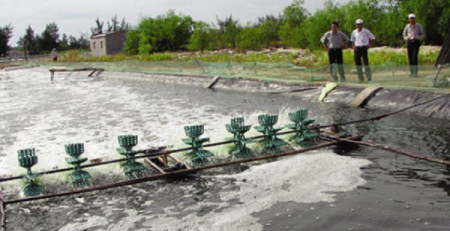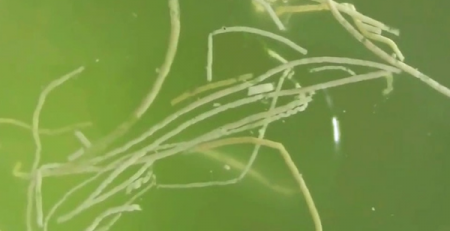The optimal solution to kill algae in ponds
In ponds, algae work to create water color, provide oxygen and balance pond ecosystems. However, the over-exposure of algae causes water quality fluctuations, affecting the health of the shrimp.

Pond before and after the despatch
Algae toxic effects
Algae are algae that directly or indirectly affect aquatic animals such as algae, algae, algae, etc. These algae die in the water and oxygenate the liver causing necrosis. shrimp, at the same time affect the quality of pond water. Especially, when the blue algae grow, the pond water will be dark green, blue water painted, floating blue on the water and smells bad. The sun shines in the blue sky is often hatched (bloom) on the water, washed to the wind. Algae in the form of seeds or yarn, tail mink … usually discharge mucus into water can cause congestion shrimp. In some cases white shrimp are found in the intestinal tract of shrimp in the digestive tract. For algae, when dominant in ponds, water will appear green, or dark brown; Blue, yellow, red, brown stumps are concentrated on the water surface and down to the bottom of the pond when sunlight is reduced. Algae appear and develop much to show that the water in the pond is polluted. When eating shrimp algae do not digest these algae because they have hard cell walls, some cases of shrimp obstructed intestinal tract or broken because of too much algae in the intestine.
The main cause of algae growth in ponds is sunlight, warm water, pH and organic pollution in ponds. Poor feed handling of cassava roots and shrimp waste during the crop and poor pond preparation are factors that cause the pond bottom to become dirty. On the other hand, weather changes erratic, hot sun or long lasting rain, causing the salinity in the pond to fall rapidly and the stratification of the water to create conditions for algae to grow. At the same time, the environmental factors in the pond changes, the decomposition of organic humus increases the nutrient production to facilitate harmful algae in the pond development.
When algae thrive, it will create many consequences for the pond environment such as large pH fluctuations (pH may be greater than 9). While in the early morning (3 – 4 hours) algae respiration will absorb large amounts of O2 in the medium and release large amounts of CO2, resulting in lower pH in the ponds. Combined with low oxygen conditions, the immune system of shrimp will weaken and susceptible to disease.
Need alternatives
When the algae in the pond grows too strong, the farmer usually thinks of the shortest, quickest way to kill algae / control without affecting the shrimp in the pond. As we know, algae want to grow, they have to have nutrition and light. Therefore, reducing nutrients in water is a way to limit algae growth.
Usually, some measures are used as: If there is a settling pond was treated water should change water to reduce algae density; Control food not to eat left over; Suck mud and soda bottom regularly; Grafting of tilapia with shrimp in pond. Tilapia usually live in the middle and bottom layers, which can digest 30-60% of the protein in algae, especially blue algae, green algae, etc., to stabilize water quality … However, Farmers still have to use algae-killing chemicals because pre-applied solutions can not completely control the growth of algae.
Copper sulfate is a copper hydrate (CuSO4.5H2O), in crystalline blue, odorless form; has been used for many years to control algae in aquaculture in Vietnam and in the world (used in algae treatment and aquatic animal parasites treatment in the 1950s). However, copper sulfate has adverse effects, especially in some waters, brackish water, which is toxic to fish and other organisms.
When copper sulfate is used in water, it dissociates into Cu2 + and SO42-. Cu2 + is not hydrolyzed so it is toxic to aquatic life and shrimp and fish until it is excreted from the water environment by absorption by the pond bottom, precipitating with inorganic compounds in alkaline medium, or creating complex with organic compounds in acidic medium (EPA, 1985). In fact, the use of copper sulfate is very common because of its short-term effectiveness, which in turn leads to the accumulation of copper and dirt at the bottom of the pond. When seafood is eaten, these sulfate / copper sulfates will affect health, particularly the liver and nervous system. At the same time, copper sulfate will destroy all beneficial organisms / phytoplankton / algae in the water as it is also a complementary source of nutrients and a balance of biological systems in water. As the growth of aquatic plants decreases, this may affect the health, growth and survival of aquaculture.
Coptrol, superior products
Recent research has shown that biological preparations used to manage algae in organic aquaculture are much better than copper sulfate preparations. So, people in the world are turning to organic co-products because their organic co-operation is better and safer, more effective than copper sulfate. In addition, longer exposure times (with clear algal degradation) and stable activity in alkaline water. In addition, the dosage is lower and the application times are also less than copper sulfate.
Field studies and field use of copper sulfate have been shown to cause potentially high adverse and adverse effects on the environment. Specifically, shrimps and fish grow slowly and develop unevenly. While copper is good for algae and other algae, it does not affect plankton (water-suspended organisms) and beneficial algae when used in ponds. . When applied, co-organic works immediately and works very well. After use, it stays active in water longer, suspended in water rather than sinking to the bottom. This allows us to use less copper and this is a more accurate and effective way to deal with algae. With these advantages, co-organic is a better technical choice for algae control needs.
Coptrol is a product in the form of copper, used to kill algae by the latest technology and very effective. User friendly, easy to use. First, determine the amount required for each pond, then mixed with water at a ratio of 1:10 to 20 (1 liter Coptrol for 10 – 20 liters of water). Spraying solution on the surface of shrimp pond. Use sprayers or agricultural sprayers to spray directly on the pond surface. Note, Coptrol should not be used in cases where the hardness (CaCO3) of water is below 50 ppm and when the water temperature is below 160C. In addition, many algae will lose oxygen in the water, this will affect the health of shrimp and fish. Therefore, need to kill algae slowly, it is best to divide the pond / ponds into 2 to 3 times to kill and kill each other for about 10 days. Aeration should be maximized during this time to ensure sufficient supply of oxygen to the pond.
Source: contom.vn


